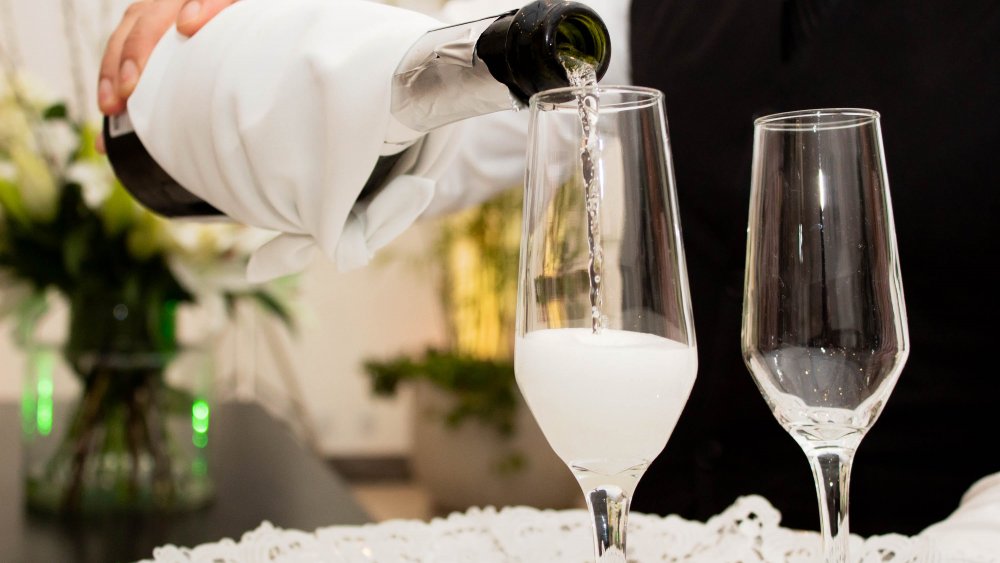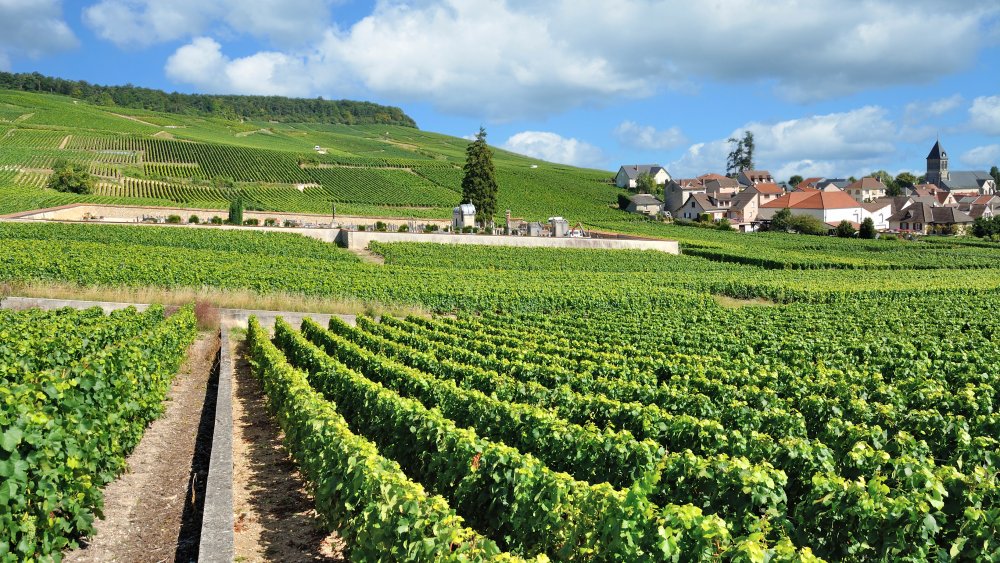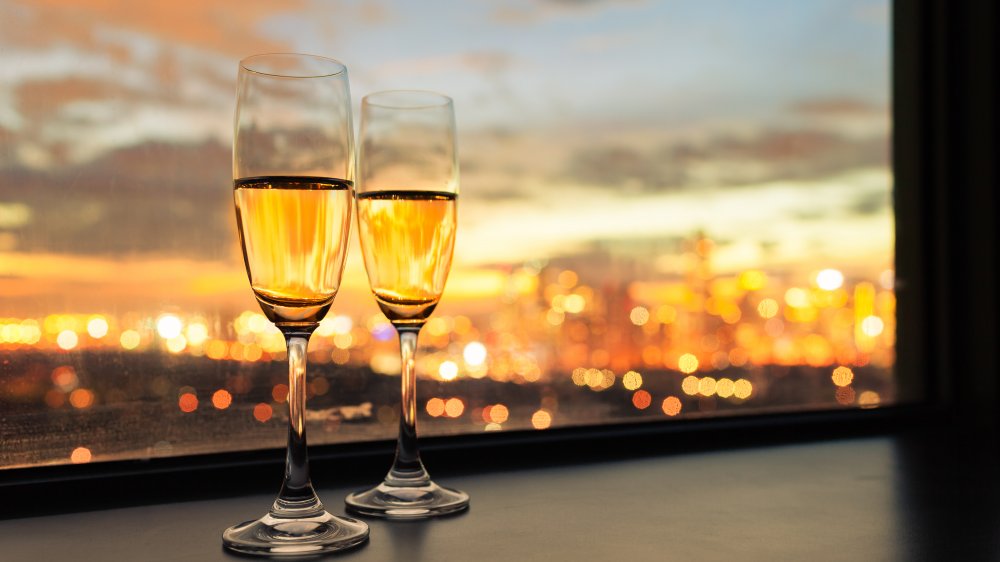Why Real Champagne Is So Expensive
We often call any form of sparkling wine at any celebration "champagne," and since all sparkling wines around the world are made the same way, you might wonder why Champagne is so special — and why it is so expensive. But real Champagne can only come from just one region in France, located around 93 miles (or 150 km) east of Paris, and about 84,000 acres in size.
This plot of land, which measures a little over double the size of San Francisco, feeds the world's appetite for real Champagne by producing an average of over 300 million bottles a year for a revenue of a cool $5 billion (via Business Insider).
The Champagne region is not ideal for growing grapes
Because the area's average temperature sits at around 50 F, the Champagne region is colder than France's other wine-producing areas, which also means the grapes live under the constant threat of experiencing a killer frost, further threatening what is already a difficult crop to cultivate. If the grapes survive Mother Nature's obstacle course, they are picked the traditional way. "It's harvested by hand, because the machines are forbidden by law," says Aurèlien Laherte, whose family has also made Champagne's sparkling wine for generations. "It's important to select only the best grapes, especially because of the heterogeneity of each different plot and each different vine. It's a really important sign of quality."
VinePair says Champagne is produced by "méthode traditionelle" or "méthode champenoise," where the wine undergoes a primary fermentation before it is bottled, and then it is put through a second fermentation after the bottling is complete. The second fermentation happens after yeast and sugar are added, and when the second fermentation finishes, the yeasts are removed.
This may sound simple enough, but Champagne must also be aged for at least 15 months, while vintage Champagne is aged for 36 months. The growing and fermentation processes further add to the cost of a product that is in high demand but in limited supply.
Why is Champagne so expensive?
As if Champagne wasn't rare and exclusive enough, not all Champagnes are created equal. Fabrice Rosset, Chairman and CEO of Champagne Deutz, tells Nexchange Now, "There are 3 main types of champagne: prestige cuvée, vintage, and non-vintage. Prestige cuvée means it's produced on a small scale. For example, we sell only 35,000 bottles of Amour de Deutz per year. The scarcity has an impact not only on the price but also on the value. Among the non-vintages the price can indeed vary, this has to do with the producer name and mostly with the cost factors."
He continues, "At Deutz, we grow our own grapes and we also buy some, the cost per kilo produced is twice the market price. Also at Deutz I use only first pressings (called vins de cuvée) and sell the second pressings, or the taille, from the English word 'tail.' or the remaining part. Also there is a 15 to 20 percent cost difference between using the Grand Cru and non-Grand Cru. Then comes the aging, which is by law 12 months. I keep my non-vintages for 3 years, which is a substantial financial burden in terms of the inventories. I have a total obsession for quality. And this matters when you want to convert someone to your brand."


